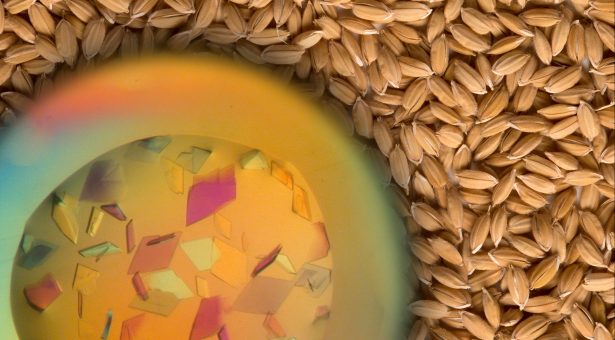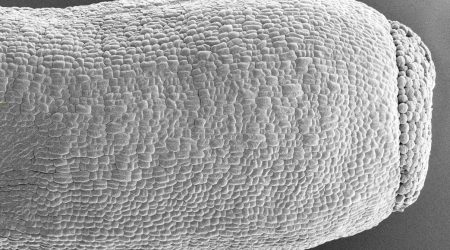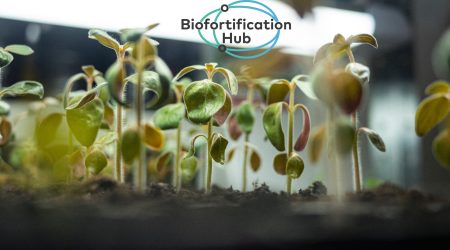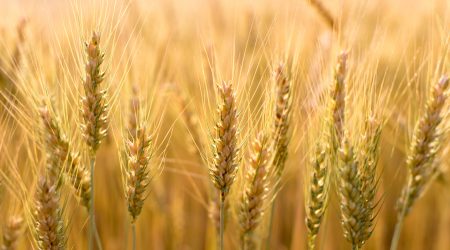Discovery could pave the way for disease-resistant rice crops

Researchers have uncovered an unusual protein activity in rice that can be explored to give crops an edge in the evolutionary arms race against rice blast disease, a major threat to rice production around the world.
Magnaporthe oryzae, the fungus that leads to rice blast disease, creates lesions on rice plants that reduce the yield and quality of grain. The fungus causes losses of up to a third of the global rice harvest, enough to feed 60 million people each year.
Rice farmers employ various strategies to ward off the fungus, but a sustainable approach is not yet available. Both the cost and environmental concerns have limited the success of fungicides, and resistant varieties can be low yielding.
Crop breeders experience linkage drag, a phenomenon where undesirable genes are transferred along with desired ones. This has made it difficult to produce varieties of rice that have both improved disease resistance and a good rate of grain production.
Gene-editing technologies could eventually be used to precisely insert genes in rice plants, overcoming the issue of linkage drag, but first, genes that boost rice immunity need to be identified or engineered.
A team of researchers from the John Innes Centre with colleagues in Japan report in the Journal of Biological Chemistry that a particular rice immune receptor—from a class of receptors that typically recognise only single pathogenic proteins— can perform a dual role by triggering immune reactions in response to two separate fungal proteins.
The genes that encode this receptor could become a template for engineering new receptors that can each detect multiple fungal proteins, and thereby improve disease resistance in rice crops.
Rice blast fungus deploys a multitude of proteins, known as effectors, inside cells of the rice plant. In response, rice plants have evolved genes encoding nucleotide binding–leucine-rich repeat proteins, or NLRs, which are intracellular immune receptors that bait specific fungal effectors. After an NLR receptor’s specific fungal effector binds to the bait, signaling pathways are initiated that cause cell death.
“(The cells) die in a very localised area so the rest of the plant is able to survive. It’s almost like sacrificing your finger to save the rest of your body,” said Professor Mark Banfield, group leader at John Innes Centre and lead author of the study.
Previous work showed that fungal effectors AVR-Pia and AVR-Pik have similar structures. In this study the researchers sought to find out whether any rice NLRs known to bind to one of these effectors could perhaps also bind to the other.
The researchers introduced different combinations of rice NLRs and fungal effectors into tobacco plants (a model system for studying plant immunity) and used rice plants to show if any unusual pairs could come together and elicit immune responses. An AVR-Pik-binding rice NLR called Pikp triggered cell-death in response to AVR-Pik as expected, but surprisingly, the experiments showed that plants expressing this NLR also partially reacted to AVR-Pia.
The authors investigated the unexpected pairing using X-ray crystallography and noticed that the rice NLR possessed two separate docking sites for AVR-Pia and AVR-Pik.
“In its current form, Pikp causes meager immune reactions after binding AVR-Pia, however, the receptor’s DNA could be modified to improve its affinity for mismatched effectors”, said Professor Banfield.
“If we can find a way to harness that capability, we could produce a super NLR that’s able to bind multiple pathogen effectors,” he added.
Ultimately gene-editing technologies could be used to insert enhanced versions of NLRs—like Pikp—into plants, said Professor Banfield, which could tip the scale in favor of rice crops in the face of rice blast disease.



